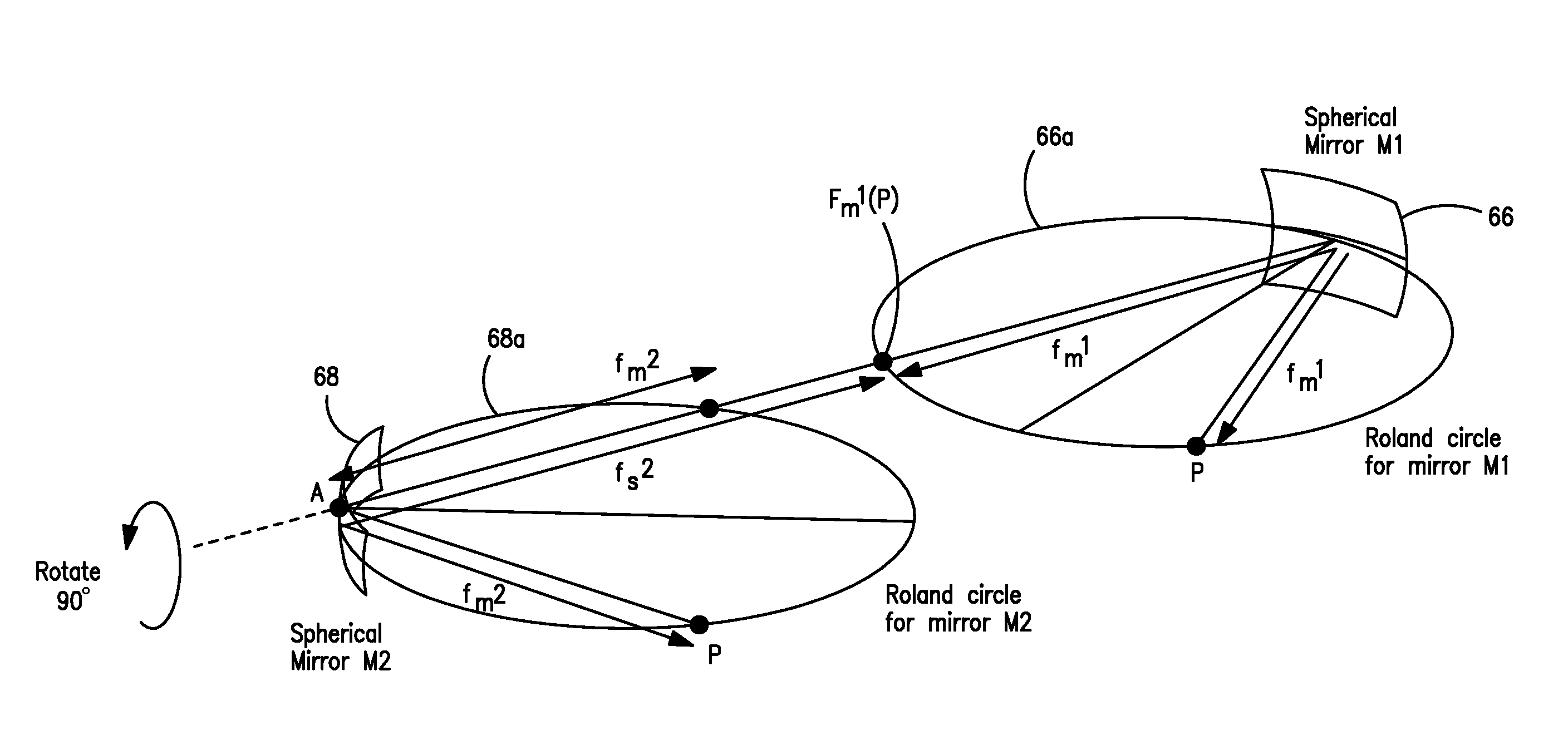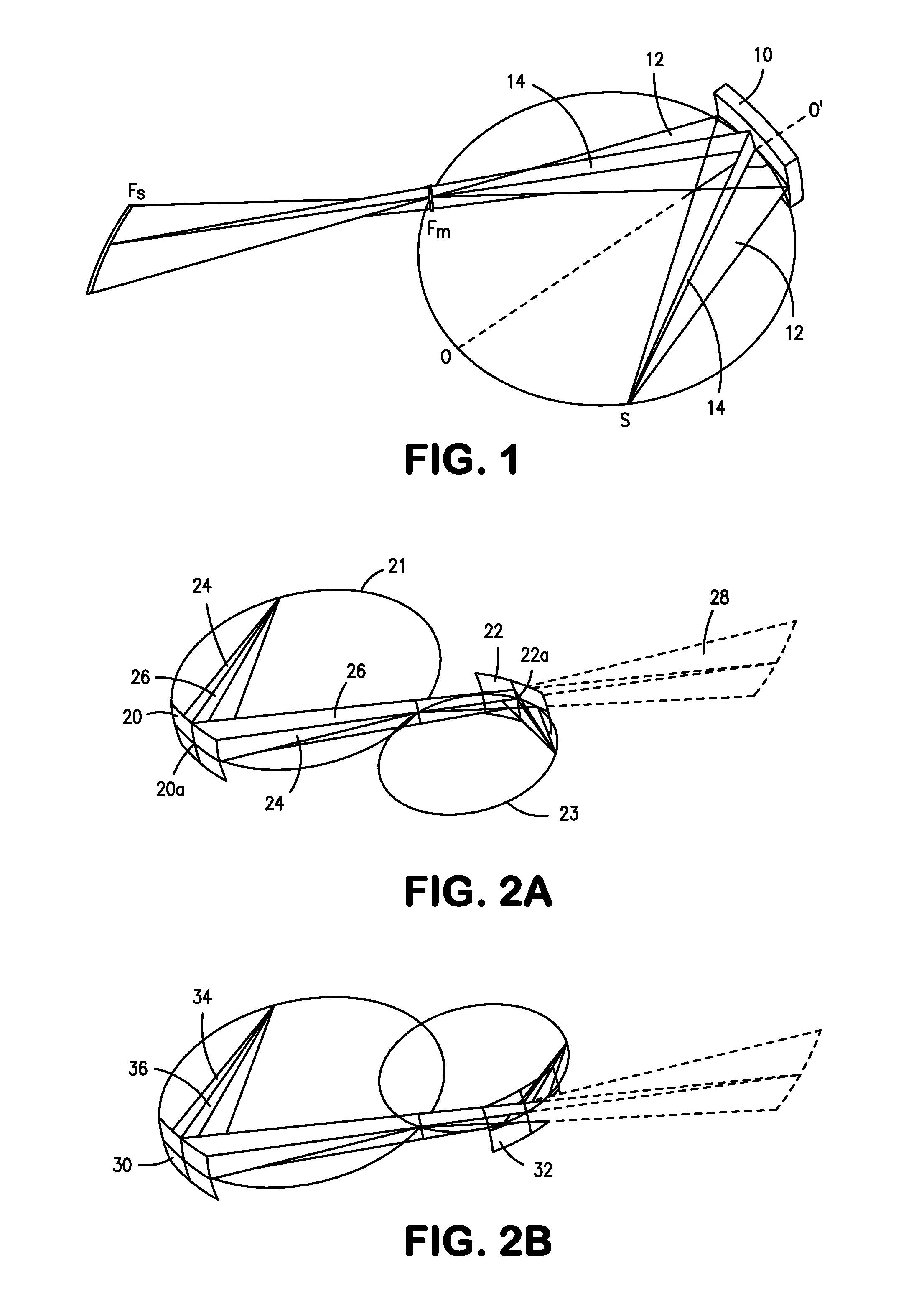Non-astigmatic imaging with matched pairs of spherically bent reflectors
a non-astigmatic imaging and reflector technology, applied in the field of imaging apparatus, can solve the problems of not being able to fully satisfy the analysis of detailed data, the imaging scheme is not readily applicable to other plasma sources, and the image is not fully satisfactory
- Summary
- Abstract
- Description
- Claims
- Application Information
AI Technical Summary
Benefits of technology
Problems solved by technology
Method used
Image
Examples
case i
[0029] As shown in FIG. 3, θ1>45° and θ2>45°. In this case, the sagittal images, produced by the two reflectors 40 and 42, are both real, and only the conditions of equations (8) and (9) must be satisfied.
case ii
[0030] As shown in FIG. 4, one of the Bragg angles is smaller and the other larger than 45°, e.g., θ12>45°. In this case, only the sagittal image produced by reflector 62 is real, whereas the sagittal image obtained from reflector 60 is a virtual image Fs, meaning that the sagittal rays reflected by reflector 60 are divergent and appear to emanate from a virtual focus behind the reflector. Therefore, an additional condition, the so-called convergence / divergence condition,
R1 cos(θ1)·tan(2θ1)=−R2 cos(θ2)·tan(2θ2) (10)
which was already given as equation (6) above, must be satisfied for the rays between the two reflectors. Equation (10) is evidently different from equation (9). However, both conditions can be satisfied if
θ1+θ2=90° (11)
since then tan(2θ1)=−tan(2θ2).
[0031]We first consider the experimental arrangement which is associated with case I, where both Bragg angles are larger than 45°. FIG. 3 shows a schematic for the parameters: θ1=50°, R1=12.0; θ2=60°, R2=15.4. Here, the valu...
PUM
 Login to View More
Login to View More Abstract
Description
Claims
Application Information
 Login to View More
Login to View More - R&D
- Intellectual Property
- Life Sciences
- Materials
- Tech Scout
- Unparalleled Data Quality
- Higher Quality Content
- 60% Fewer Hallucinations
Browse by: Latest US Patents, China's latest patents, Technical Efficacy Thesaurus, Application Domain, Technology Topic, Popular Technical Reports.
© 2025 PatSnap. All rights reserved.Legal|Privacy policy|Modern Slavery Act Transparency Statement|Sitemap|About US| Contact US: help@patsnap.com



